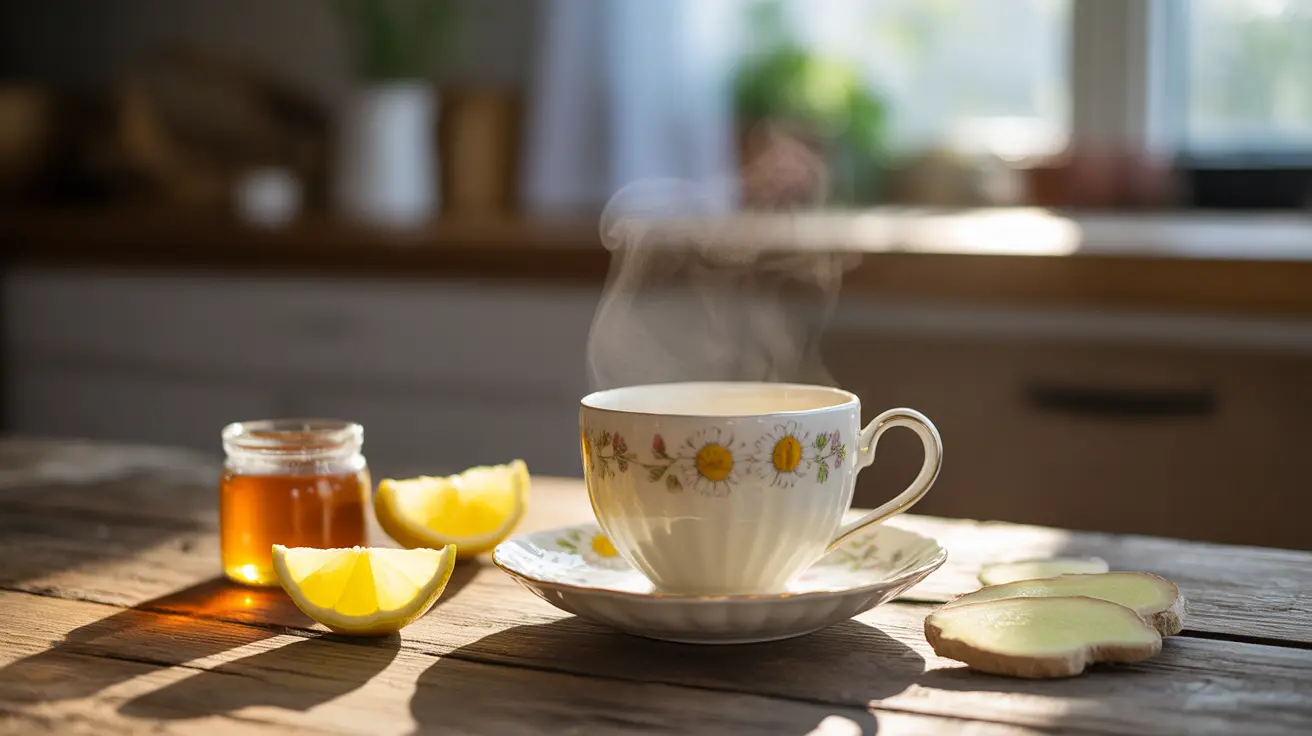When dealing with a sore throat, many people turn to natural remedies for relief. Chamomile tea has emerged as a popular and effective solution, thanks to its anti-inflammatory and soothing properties. This comprehensive guide explores how chamomile tea can help alleviate sore throat discomfort and the best ways to use it safely.
Understanding Chamomile's Therapeutic Properties
Chamomile contains several beneficial compounds, including flavonoids and terpenoids, that contribute to its therapeutic effects. These natural substances work together to reduce inflammation and provide antimicrobial benefits, making it particularly effective for sore throat relief.
How Chamomile Tea Helps Sore Throats
The healing properties of chamomile tea work in multiple ways to soothe a sore throat:
- Anti-inflammatory effects that reduce throat swelling
- Natural antimicrobial properties that may help fight infection
- Mucilage content that creates a protective coating on irritated throat tissue
- Gentle pain-relieving properties that help ease discomfort
Preparing the Perfect Therapeutic Cup
To maximize the benefits of chamomile tea for sore throat relief, proper preparation is essential:
Basic Preparation Method
Use one chamomile tea bag or 1-2 teaspoons of loose dried chamomile flowers per cup of hot water. Steep for 5-10 minutes, allowing the therapeutic compounds to fully infuse into the water. For enhanced benefits, cover your cup while steeping to prevent the beneficial volatile oils from escaping.
Adding Natural Enhancers
Consider incorporating these beneficial additions to your chamomile tea:
- Raw honey for additional antimicrobial properties
- Fresh lemon for vitamin C and immune support
- A pinch of turmeric for extra anti-inflammatory benefits
- Fresh ginger for added throat-soothing properties
Using Chamomile Tea as a Gargle
Beyond drinking chamomile tea, you can use it as an effective gargle solution. Prepare the tea as usual, let it cool to a comfortable temperature, and gargle for 30-60 seconds before spitting it out. This method allows direct contact between the tea's beneficial compounds and the affected throat tissue.
Safety Considerations and Precautions
While chamomile tea is generally safe for most people, there are some important considerations:
- Those with ragweed allergies should exercise caution
- Pregnant women should consult healthcare providers before use
- Individuals on blood-thinning medications should seek medical advice
- Stop use if any allergic reactions occur
Frequently Asked Questions
How does chamomile tea help soothe a sore throat?
Chamomile tea contains anti-inflammatory and antimicrobial compounds that reduce throat inflammation and fight infection. Its mucilage content creates a soothing coating on irritated throat tissue, providing natural pain relief.
Can drinking chamomile tea with honey improve sore throat relief?
Yes, combining chamomile tea with honey enhances its therapeutic effects. Honey adds its own antimicrobial properties and creates a protective coating on the throat, while also providing additional soothing benefits and making the tea more palatable.
Are there any side effects or allergic reactions associated with chamomile tea for sore throat?
While generally safe, some people may experience allergic reactions, particularly those with ragweed allergies. Possible reactions include itching, swelling, or difficulty breathing. It's important to stop use and seek medical attention if these symptoms occur.
What is the best way to prepare chamomile tea for sore throat symptoms?
Steep one chamomile tea bag or 1-2 teaspoons of dried flowers in hot water for 5-10 minutes. Cover while steeping to retain beneficial compounds. Add honey and lemon if desired, and drink while warm for maximum benefit.
Can chamomile tea be used safely as a gargle for sore throat inflammation?
Yes, chamomile tea can be safely used as a gargle solution. Prepare the tea as usual, allow it to cool to a comfortable temperature, and gargle for 30-60 seconds before spitting out. This method provides direct contact between the tea's beneficial compounds and the affected area.




